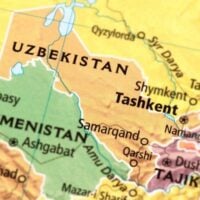Deadline: 31-Aug-23
The U.S. Embassy in Kuala Lumpur and U.S. Embassy in Singapore announce the Notice of Funding Opportunity (“NOFO”) for Building Diaspora Resilience and Sustaining Traditional Identities through Promotion of Hokkien Language, an open competition for organizations to submit application to reinforce diaspora identities, promote linguistic diversity, and build community resilience to outside influence.
This project will work with diaspora organizations interested in the promotion of Hokkien and its associated heritage. In addition to civil society organizations specifically interested in linguistic preservation, Malaysia and Singapore have longstanding and influential community associations based on historical community affiliations such as Hokkien, Cantonese, and Hakka which are interested in cultural preservation. In partnership with these organizations, this project will assist local content producers to create Hokkien-language content and hold events with the global Hokkien diaspora; facilitate a joint project with Taiwan-based influencers highlighting shared culinary, cultural, and religious traditions; and fund the development and promotion of a keyboard API for writing Hokkien-specific characters on smartphones. As the non-Mandarin Chinese language with the largest number of native speakers in Southeast Asia, the promotion of Hokkien provides a unique opportunity for engagement with Chinese diaspora communities and will showcase U.S. support for cultural diversity and unique local heritage.
Objectives
- In your proposal, your activities must align to one or more of the program objectives below:
- Objective 1: Chinese diaspora communities within the target countries have increased access to traditional non-Mandarin Chinese identity and culture, including Hokkien culinary, cultural, or religious events.
- Objective 2: Local content producers in the target countries will increase the quantity and quality of Hokkien-language content available in Southeast Asia.
- Objective 3: Develop and launch an easy-to-use input system for writing Hokkien-specific characters on smartphones within one year of project start date.
Funding Information
- Approximate Total Funding: $ 25,000 to 500,000 USD
- Approximate Number of Awards: 1-5
- Anticipated Award Date: September 29, 2023
- Anticipated Project Completion Date: September 29, 2024
- Notification of Project Approval/Disapproval and Notice of Award Signing: September 30, 2023
Expected Outcomes, Outputs and Activities
- Potential Outcomes
- The following outcomes are illustrative of the potential changes that may result from implementing your proposed project activities and of the projects the U.S. Embassy implements.
- After facilitating collaborative relationships between (1) partner countries that have developed expertise in identifying and countering propaganda and disinformation and (2) partners and allies that lack this expertise so that those with expertise share their skills and technical capability with those seeking to gain expertise, foreign government capacity to identify foreign propaganda and disinformation increased by X percent. Significantly increased civil society ability, independent media, and other public influencers to recognize and resist foreign propaganda and disinformation after training.
- Raised key independent journalist’s awareness of threat actors’ propaganda and disinformation through sustainable information-sharing networks.
- Increased self-assessed trust and rapport between government, independent media organizations, and constituencies leveraging whole-of-society approaches to counter propaganda and disinformation.
- Demonstrably increased the utilization of tools and technologies to recognize and/or counter propaganda and disinformation among vulnerable target audiences.
- Significantly increased discernment of target audience to identify disinformation after administering educational activities (e.g., gamification or activities that encourage critical thinking skills).
- Demonstrated a decrease in support for violent extremist organizations (VEOs) and foreign malign influencers after disseminating content.
- The following outcomes are illustrative of the potential changes that may result from implementing your proposed project activities and of the projects the U.S. Embassy implements.
- Potential Outputs
- Below are illustrative examples of the kinds of outputs that Embassy projects may develop.
- Reports on threat actors’ methods for disseminating and amplifying propaganda and disinformation.
- Workshops, meetings, or summits convening civil society and government communicators.
- Trainings or workshops building the capacity of journalists and/or influencers.
- Content developed for campaigns.
- News articles and exposés about disinformation.
- Training curriculum.
- Below are illustrative examples of the kinds of outputs that Embassy projects may develop.
- Potential Activities
- However, some example activities:
- Dissemination of content, (i.e., via radio, film, social media, and/or other means) featuring evidence that challenges VEO narratives or malign influence.
- Conduct desk research on regional social media influencers including their target audience.
- Design a communications platform for a journalist network to share best practices.
- Draft formative research report on baseline data collection and information environment.
- Develop a communications plan to disseminate content to relevant audiences.
- However, some example activities:
Performance Indicators
- The project should monitor and report on performance indicators that are specific, measurable, achievable, reasonable, and time bound. Establish performance baseline data and expected performance targets for each expected result and include details on what sources of data will be used to document performance, how the indicators will be measured, frequency of measurement, and units of measure.
- Whole-of-Society/Resilience
- Percent of participants in resilience activities that demonstrate an increased ability to identify disinformation.
- Percent of participants in resilience activities that demonstrate an increased ability to recognize violent extremist organization propaganda and disinformation.
- Whole-of-Society/Resilience – Networking
- Number of individuals actively participating in a network.
- Number of organizations actively participating in a network.
- Number of participants at networking events.
- Number of new network connections.
- Whole-of-Society/Resilience – Training
- Number of individuals trained.
- Percent of training participants that demonstrate an increase in subject matter knowledge.
- Percent of training of the trainer participants that lead subsequent trainings.
- Whole-of-Society/Resilience – Fact-Checking
- Number of facts checked.
- Number of requests to fact-checking organization for fact checking.
- Whole-of-Society/Resilience – Media Capacity
- Percent change in media organization or journalist capacity.
- Percent of trained journalist utilizing their new skills to publish investigative content.
- Messaging and Content Creation
- Proportion of factual narratives to disinformation narratives on messaging campaign themes/topics.
- Reported audience reach for digital platforms or offline media.
- Number of online engagements (like, share, retweet).
- Percent of impressions generating an interaction (share/like/retweet).
- Number of target audience that agree with the campaign message (have positive sentiment).
- Whole-of-Society/Resilience
Target Audience: Hokkien Diaspora
Priority Regions: Malaysia and Singapore
Eligibility Criteria
- Nonprofits having a 501(c)(3) status with the IRS, other than institutions of higher education.
- Public and State controlled institutions of higher education.
- Nonprofits that do not have a 501(c)(3) status with the IRS, other than institutions of higher education.
- Private institutions of higher education.
- Eligibility is limited to U.S. non-profit/nongovernmental organizations, foreign non-profit organizations, educational institutions, and commercial entities.
For more information, visit Grants.gov.









































